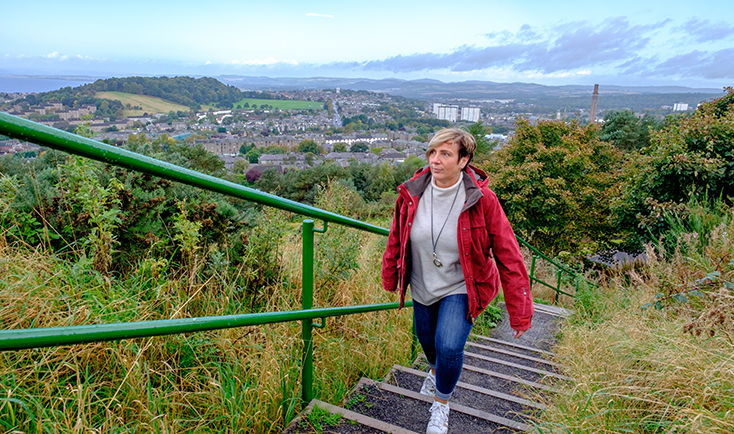
Allotments
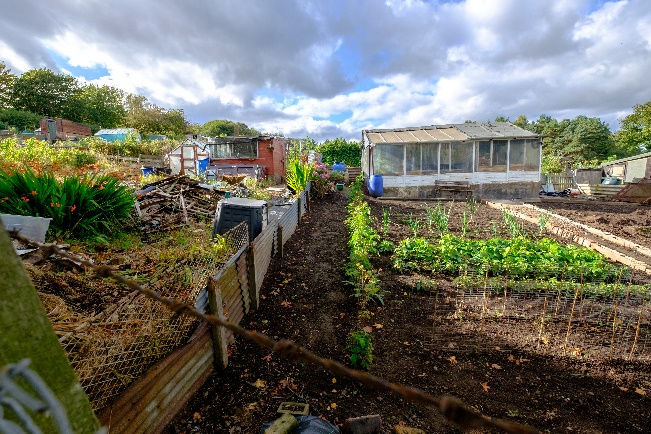
The 3 allotments around the Law are Kinnaird, Stirling Park and West Law. There is also a new project to create a growing space at the old piggeries.
Stirling Park and Kinnaird used to be lower on the hill and were moved to allow the development of housing and to allow the building of the road to the Law summit. Allotments became very important during the war periods and are attracting new interest as we become more aware of what goes into our food.
Have a look through the fence. You will see fruit and vegetables throughout the year.
Wildlife Habitats
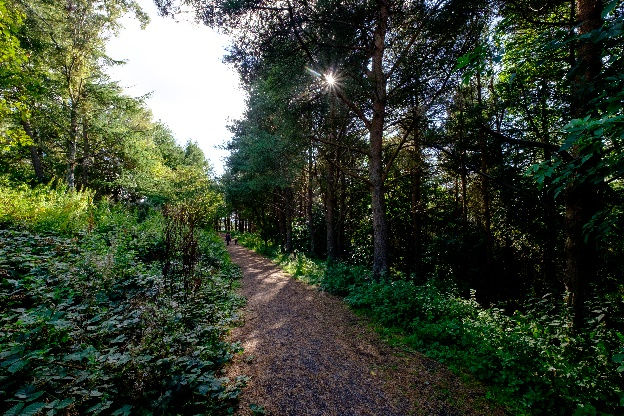
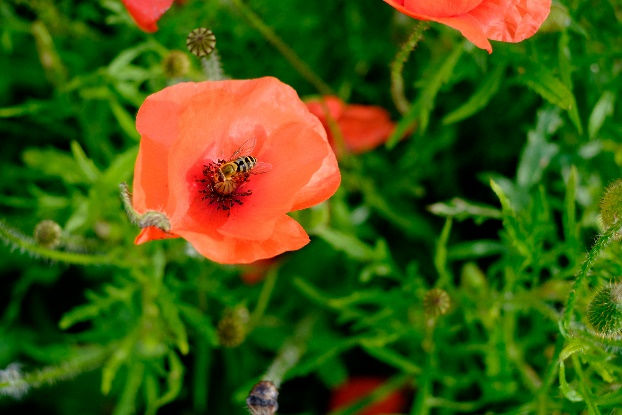
Many years ago, the Law was covered in woodland, which provided habitat for a wide variety of wildlife. This was cleared as the city grew, to provide wood for fuel and buildings, and was kept clear by grazing of sheep and cows until the 1940’s.
In the 1960’s, the council decided to improve the bare slopes of the Law to recreate the lost habitat. Pines, maple, birch, hazel, and cherry were planted, growing to the woodland we see today. Some areas where kept open with grand views, managed as meadows.
Recent studies have found a variety of wildlife here. Look out for woodland birds like finches, tits and tree creepers. Butterflies and bees are busy in the meadows. You may see squirrels or hear the calls of sparrowhawks which breed here.
Pillbox
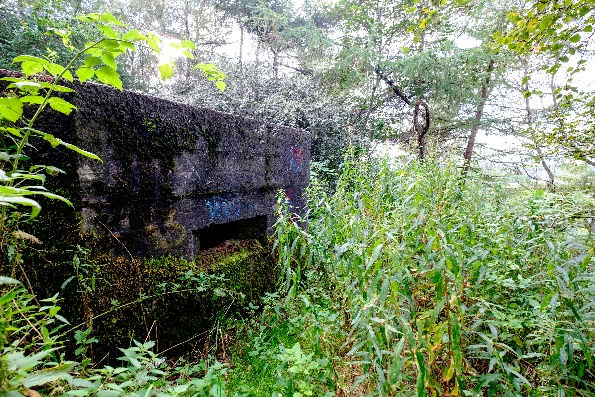
Pillboxes were built during the second world war in preparation for invasion. There is a lot of interest in Pillboxes and other war time constructions now. However for some reason, there is very little information about this one. It does not appear in the minutes of Dundee’s wartime Emergency Committee or in the Minutes of Dundee Corporation.
There was a massive build of Pillboxes as part of our anti-invasion preparation, mainly in 1941 when more than 28,000 were built across the country. The Law Pillbox was used to spot aircraft over Strathmartine. There is another one on top of Meadow Mill. The Law Pillbox is a Type 24, D Shellproof Pillbox.
The Pillbox has suffered vandalism. The Law Heritage Project intends to secure it and deter people from abusing it. It may be possible to give it a new lease of life as a cave for bats!
The water trough and old quarries
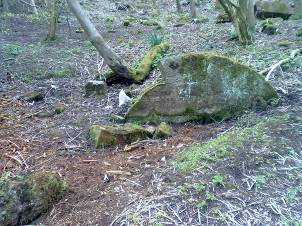

Hidden in the undergrowth is an odd structure. This is an old water trough, used to give horses a drink. The horses were here, because in 1870 this was the entrance to a quarry which also housed a smithy.
This was one of 2 quarries on the Law, which we can see in old maps. The hard igneous rock of the Law was quarried for use in railways, roads and in the making of concrete.
The quarries were active for about 40 years but it was not until 1981 that the last was completely filled in and topped with soil. The trough is clearly marked on the 1923 town plan.
Old Road
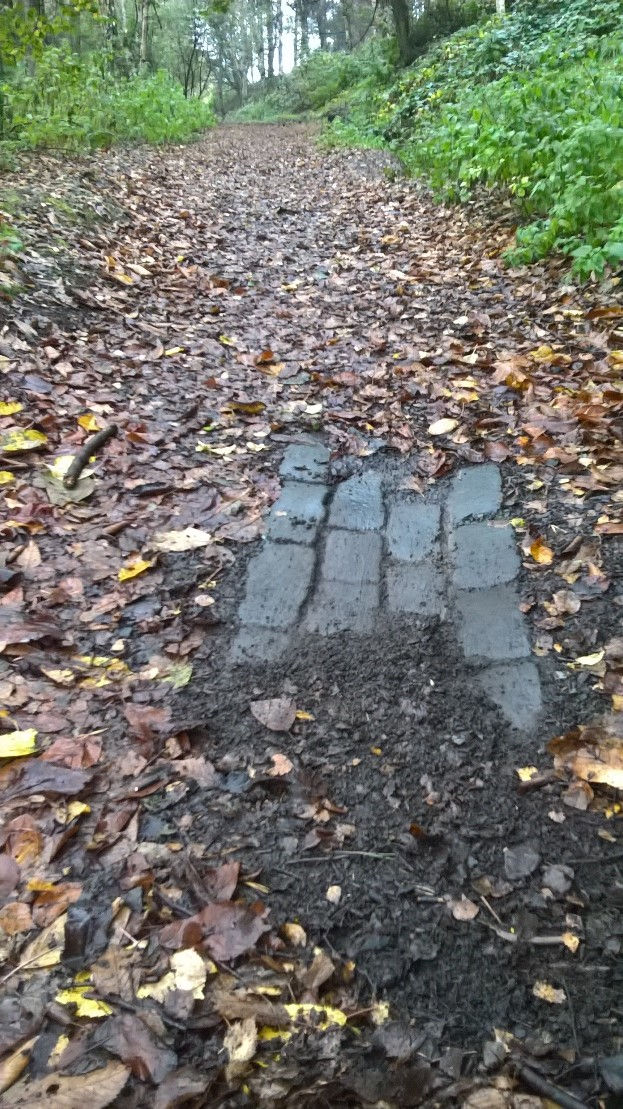
This path is on the line of the old road that ran from Lawton Farm, on Lawton Road to Constitution Street. The road is on the maps of the 19th century, before roads like Law Crescent or Law Road were built.
Horses and carts would have been the transport used on the road. You can see some remaining stone setts that would have been an improvement to the dirt surface of the road in Victorian times.
Parish Boundary Stones
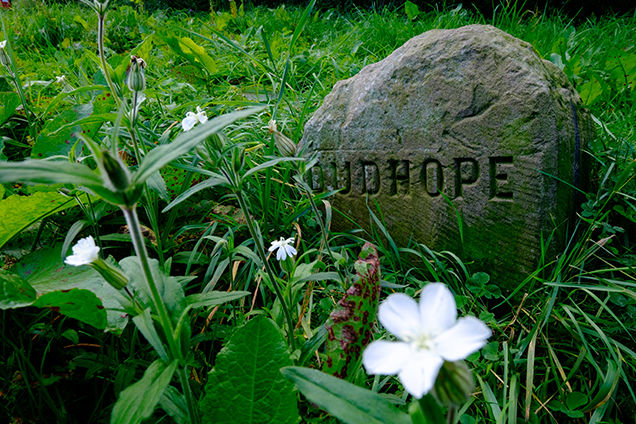
These stones mark the line of a boundary of 2 parishes. They are present – with several other lines of marker stones on the maps of the 19th Century.
Archway Structure
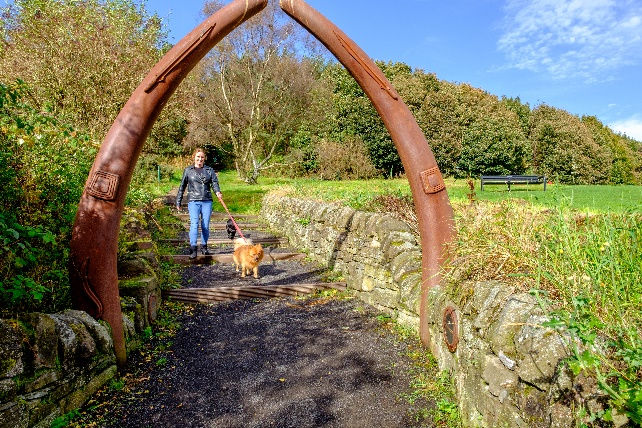
This is a replacement sculpture installed in 2013, by artist Kevin Blackwell. The original was wooden, installed in the 1990’s, but became rotten. The new sculpture features designs inspired by local school children, and there are plaques in the stone wall explaining more.
Find the images on the sculpture - they include a Jet button found at a burial cist, and ancient swords.
The Toilets
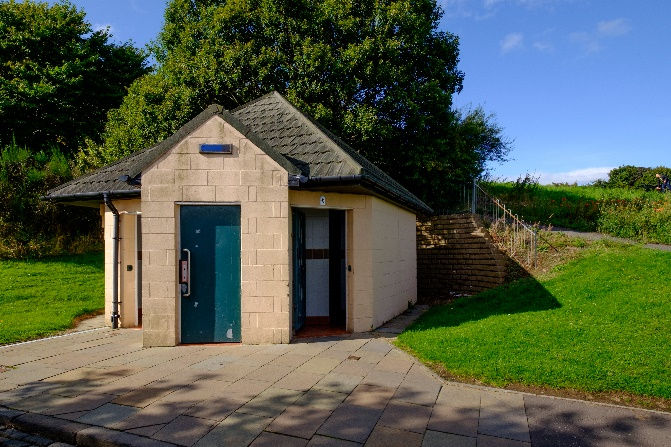
Installed in the 1980’s with European Development Funding. They are opened daily. You may notice the water pressure in the taps is very low – hardly surprising as the toilets are near the top of Dundee!.
Water Tower
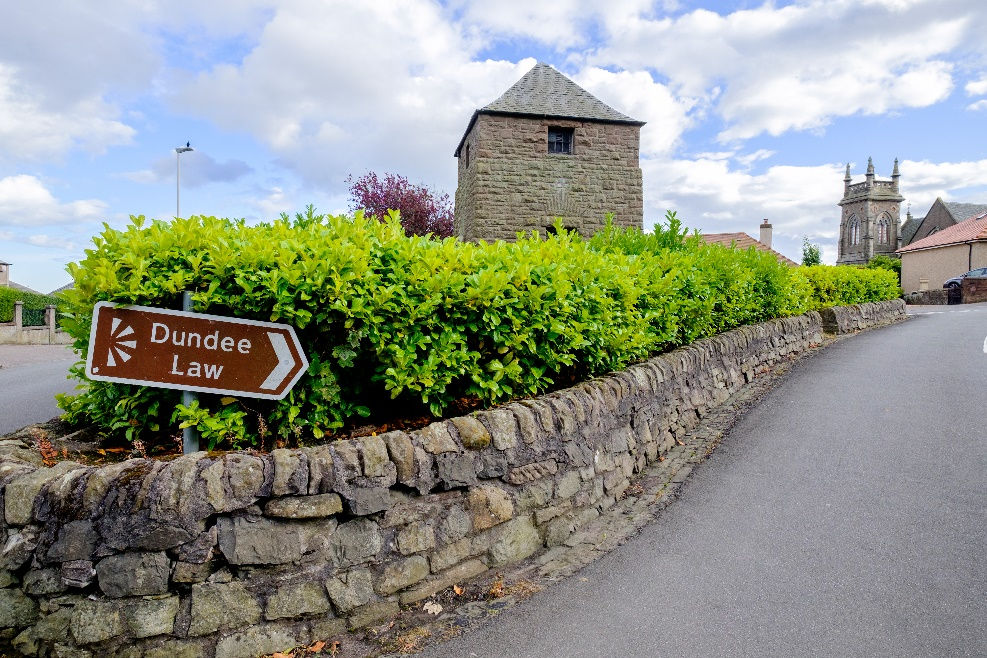
In 1920’s, new housing schemes at Logie, Hospital Park and Stirling Park benefitted from the use of district heating systems. The systems covered over 500 houses. They were an innovation in comfortable living.
Lawton Reservoir fed the Water Tower on Law Road which supplied water to the coal fired water heating station at Wishart St. The Water Tower was designed by David Baxter in the manner of old Scots Doocot.
Site of Law Tunnel
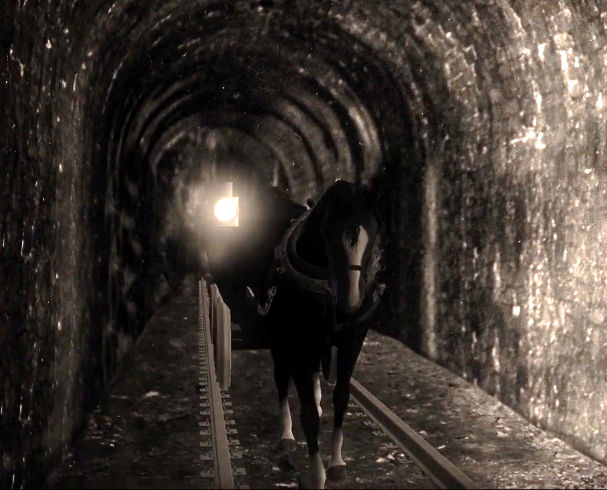
Not much to see now, but several metres below the surface near the Water Tower is the Law Tunnel. It was completed in 1829 at the top of the Law Incline as part of an innovative new transport system.
The tunnel should have produced a lot of valuable hard igneous rock, as the quarries later did. However after excavation of only a few metres either side, the hard rock gave way to very poor stone, which geologists today understand as debris left by glaciers. The excavated rock did not make money, and the tunnel engineers had to spend more money lining the tunnel with brick.
Fortunately this did the trick and it is safe to stand here today. The tunnel is not open. The ends of the tunnel were built on although engineers can enter it to make sure the inside walls remain safe and intact. Railway Video
The Top of the Law
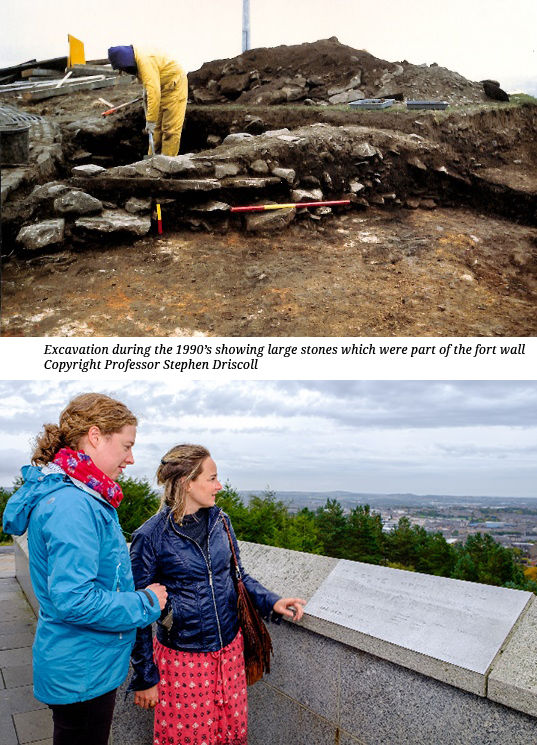
In the Iron Age a Hillfort, later a place of raising standard flags before battle and now a view point, the Law has always been important.
The 1990’s saw a major work to create the viewpoint. Before construction, there were excavations and studies carried out at the historical site, and artefacts are on display at the McManus Galleries. The excavation found evidence of the Iron Age and of a great fire which destroyed the wooden fort. They also found relics from the Roman period which suggests that the Law was used then, probably as a look out post by native people rather than by Romans.
The mounded earth at the top of the Law shows where some of the walls of the hillfort were.
The War Memorial
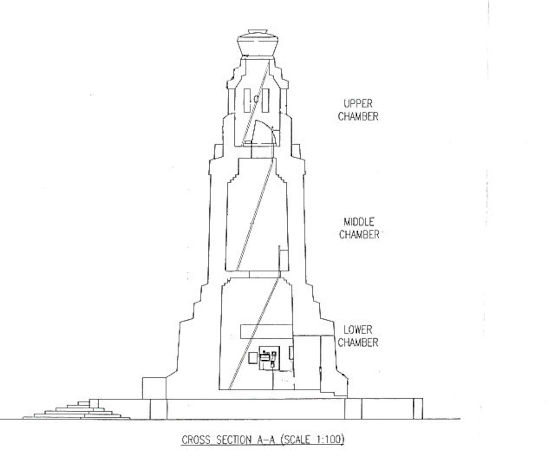
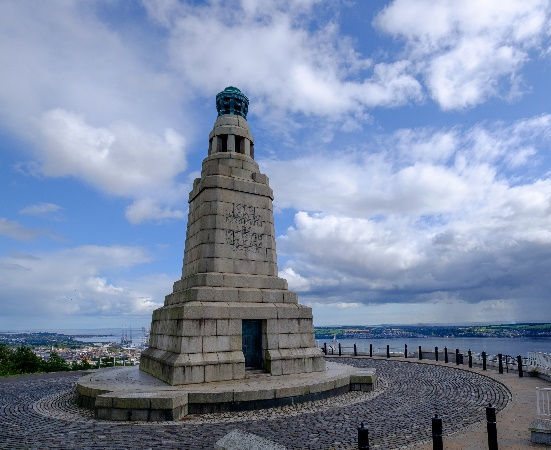
The War Memorial at Dundee Law is a Category B listed building. It has inscriptions to the memory of Dundee men who fell in the two World Wars, and a bronze brazier as a beacon.
Dundee took some time to decide where to place a monument after the First World War, so it was not until 1925 that it was finished and unveiled. There was a design competition won by Thomas Braddock of Wimbledon.
There is a room inside the monument. During the Second World War, this was used as a National Fire Service Observation Post. Some simple modifications were made (a telephone connection) in 1943. It must have been horrible on a cold windy night.
Today the beacon at the top is lit on 5 days during the Autumn, marking important dates in the history of the wars and the major battles that Dundee men battled.
The Compass (Topograph)

The Compass view point is shown on the 1902 map. The main part is cast iron, the Compass top is brass. It shows many landmarks visible on a clear day, with the distance to them.
The Law Steps
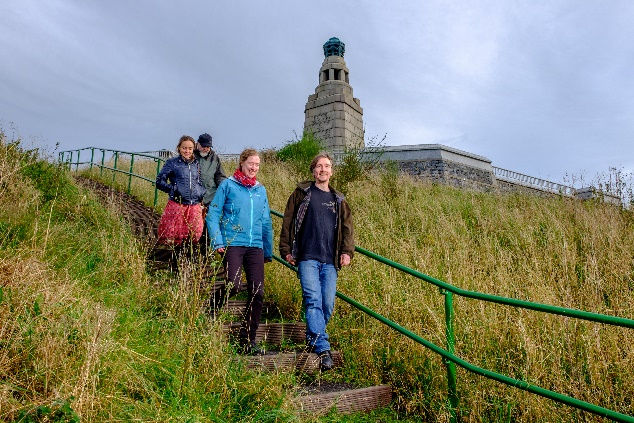
There have been steps here for decades. They are shown on aerial photography from 1927.
The wooden steps have been replaced many times, as they rot. In 2016, Dundee City Council replaced the rotten steps again, but have used recycled plastic, which it is estimated will last for over one hundred years. 300 steps were replaced.
Counting the steps is a popular activity for families walking to the top of the Law.